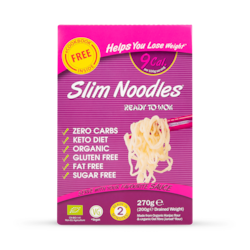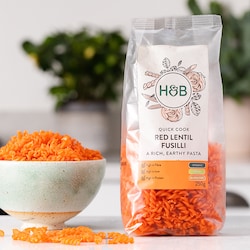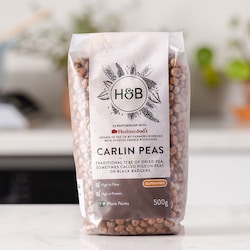20% off £30
Healthy cereal: Does it exist?

We’ve all grabbed a bowl of cereal for breakfast or a snack in between meals and probably thought nothing more of it.
Some of us, children and adults, eat it every single day. And some of us eat cereal one day and then enjoy other breakfast staples, such as toast, eggs or yoghurt with fruit and nuts, the next
But how many of us have stopped to take a closer look at the ingredients list on the back of their boxes of cereal? Because it may taste great and be quick and easy to whip up, but are healthy breakfast cereals really a thing?
Hold that thought, because we’re going to tackle it over the next few paragraphs. Once you’ve reached the end, you’ll know if healthy cereal does actually exist and what to check for when selecting your cereal based on its health credentials.
What is cereal?
Cereal, or breakfast cereals, are grain food that usually comes all prepared and ready for us to eat in boxes or bags. Traditionally, these cereals are eaten with your milk of choice, either hot or cold, depending on your personal preference.1
Generally speaking, there are 4 different types of ready-to-eat breakfast cereals:
1. Flaked cereal – this type of cereal is made from corn, wheat or rice that’s been broken down into grits, cooked with flavours and syrups and then pressed into flakes between cooled rollers.
2. Puffed cereal – which is made by exploding cooked wheat or rice from a pressure chamber. This expands the grain to several times its original size, giving it its puffy appearance.
3. Shredded cereal – is made from pressure-cooked wheat that’s squeezed into strands, then cut into biscuits and dried.
4. Granular cereal – which is made by a process in which a stiff dough, that’s created from a mixture of wheat and malted barley flour, salt, yeast and water, is fermented and baked thoroughly. It’s then crumbled and rebaked and ground into rough grains. The cereal is then treated to restore any vitamins that may be lost through cooking and often coated with a sweet flavouring.
Not only are cereals made differently, their nutritional value varies from one to the next too, depending on the ingredients that are used to make them. For instance, many of these cereals can be loaded with added sugar, fibre content and salt.2
And these ‘hidden’ ingredients, regardless of the fact they may make cereals taste extra tasty, can contribute to weight gain and health problems, including tooth decay and high blood pressure if you eat too much of them.3
Summary
There are four main types of cereal – flaked, puffed, shredded and granular. All of these cereals are as different in nutritional value as they are in look and taste. Many of them may contain added sugar, fibre and salt, making them unhealthy.
Is any cereal actually healthy?
Yes, certain cereals are healthier than others. The NHS recommends selecting cereals that contain wholegrains and have lower sugar, fat and salt levels.4
Healthy cereal examples:
- Wholewheat cereal biscuits
- Shredded wholegrain pillows
- Porridge oats
These cereals are the healthier option because they are all made from wholegrains, which contain fibre and B vitamins, among other nutrients.
Fibre helps keep our digestive systems healthy. According to some research studies, people who follow a diet that’s high in fibre may be at reduced risk of developing heart disease and type 2 diabetes.
Muesli, which usually contains wholegrains and fruit, is often seen as being a healthier option. But make sure you check the label first, as many muesli blends can be particularly high in fat, added sugar, and sometimes, salt. More on this below…
What is the healthiest cereal to eat?
Based on nutritional value, in particular the added sugar, fibre, salt content we mentioned earlier, porridge, muesli (with no added salt or sugar) and shredded whole wheat cereal are the top three healthiest cereals.
Breakfast cereals that are low in sugar, fat and salt will contain5:
- 5g of total sugars or less per 100g
- 3g of saturated fat or less per 100g
- 0.3g of salt or less per 100g
Healthy cereal 1: Porridge
Porridge is by far the best healthy breakfast cereal when it’s made with low-fat milk on its own, water or a mixture of low-fat milk and water, and is the unsweetened variety. (6)


Porridge oats, which are used to make porridge are wholegrains, contain a soluble fibre called beta-glucan that can help reduce cholesterol levels if you have 3g or more of it a day. Plus, on top of the beta-glucan, there’s the fact the grains in porridge contain plenty of fibre.
Nutritional value
One 40g bowl of porridge (made with semi-skimmed milk) contains:
| Energy | Fat | Saturates | Sugar | Salt |
|---|---|---|---|---|
| 241kcal | 6.2g | 2.5g | 8.2g | 0.2g |
Tip: Don’t add any extra sugar or salt to your porridge, eat it plain for the healthiest version of it. However, if you’ve got a bit of a sweet tooth, then you may prefer to to sweeten it up is by topping it with some slices of banana or other fresh fruit.
Heathy cereal 2: Muesli
Muesli (with no added salt or sugar) is second on our list.


Muesli contains a combination of grains, fruit and nuts. How much grains, fruit and nuts you’ll get will vary from brand-to-brand.7
The dried fruit should provide you with all the additional sweetness you need and count towards your five a day.
However, make sure your muesli contains no added sugar, and be mindful of the fact any dried fruit pieces in your muesli mixture will naturally contain sugar that may not necessarily be clearly listed on the ingredients label.
Nutritional value
One 50g bowl of Swiss-style (no added sugar or salt muesli contains:
| Energy | Fat | Saturates | Sugar | Salt |
|---|---|---|---|---|
| 179kcal | 2.9g | 0.6g | 6.5g | 0.08g |
Tip: Watch out for banana chips – they may give your muesli some crunch and sweetness, but they happen to contain added sugars and saturated fats. The healthiest way to add banana to your breakfast is by topping it with some fresh banana slices.
Healthy cereal 3: Shredded whole wheat cereal
Shredded whole wheat cereal with low-fat milk ticks lots of boxes – it contains zero added sugar, no added salt and is high in fibre.


However, be mindful if you’re eating fruit-filled shredded whole wheat because it may contain added sugar that’s not necessarily been listed on the ingredients list. Frosted variations of this type of cereal almost always contain added sugar.
Tip: Add fresh fruit, such as a banana or berries, to make your whole wheat cereal taste sweeter without increasing those sugar levels.
Nutritional value
One 45g bowl of shredded whole wheat cereal contains:
| Energy | Fat | Saturates | Sugar | Salt |
|---|---|---|---|---|
| 163kcal | 2g | 0.2g | 0.3g | 0.02g |
Summary
The healthiest cereals are those that contain wholegrains and have lower sugar, fat and salt levels. Based on their nutritional value, wholewheat cereal biscuits, shredded wholegrain and porridge oats are three of the healthiest cereals.
What is the best cereal for weight loss?
Managing your calorie intake is integral to weight loss. When it comes to breakfast-time, it’s best to follow the 400-600-600 approach. This involves no more than8:
- 400kcal for breakfast (including any drinks and accompaniments)
- 600kcal for lunch (including any drinks and accompaniments)
- 600kcal for dinner (including any drinks and accompaniments)
Any calories that may be leftover can be used to enjoy a few healthy drinks and snacks throughout the day. This guidance from the NHS is based on a woman's daily recommended calorie intake of 2,000kcal.
Steer clear of: Processed, refined, high-sugar cereals that are rich in calories, carbohydrates and sugars.0
Look out for: Whole grain cereals made with healthy ingredients, such as nuts, and no added sugar, fibre or salt.
Choose cereals: That contain no more than 6g of sugar and at least 3g of fibre.
Also watch your portion sizes, which are key to losing weight and applies to all meals, not just what you eat for breakfast. What’s more, just as cereals can be loaded with unwanted hidden ‘extras’ they can also be fortified with added vitamins and minerals, such as Vitamin B6, iron, calcium, riboflavin and niacin.
What is the least healthiest cereal?
Unhealthy cereals are laden with sugar, fat and salt. You’ll find they contain more than10:
- 22.5g of total sugars per 100g
- 17.5g of fat per 100g
- 1.5g of salt per 100g
As for what these cereals look like in reality, these three types of cereal are the unhealthiest, based on their nutritional value and how much sugar, fat and salt they contain.
Unhealthy cereal 1: Granola with chocolate
Granola with chocolate is high in fat and sugar, and because it contains chocolate – it contains even more fat and more sugar. Granola may taste amazing, but it’s best kept as an every-once-in-a-while treat.11
Nutritional value
One 50g serving contains:
| Energy | Fat | Saturates | Sugar | Salt |
|---|---|---|---|---|
| 220kcal | 15g | 6.8g | 24g | 0.5g |
Swap for: Holland & Barrett Made for You Cranberry & Dark Chocolate Immunity Granola 350g
Swapping milk chocolate for dark chocolate may not seem like a big deal, but it contains significantly less sugar.
Plus, if you are going to treat yourself to a chocolatey breakfast, this granola is made with acerola cherry powder designed to naturally support your immunity.
It is also a source of vitamin C and copper, so you can support your wellness goals at the same time.
Unhealthy cereal 2: Granola with dried fruit, nuts and seeds
A 60g serving portion of nuts without milk contains 270kcal and 12.3g fat of, 2.8g of which is saturated fat.
If served with 125ml of full-fat milk, this bumps the calories up by another 81 kcal and 4.6g of fat (2.9g of which is saturated).12
Nutritional value
| Energy | Fat | Saturates | Sugar | Salt |
|---|---|---|---|---|
| 270kcal | 13.3g | 2.7g | 10.7g | <0.01g |
Swap for: Rude Health Low Sugar Granola 400g
Rude Health's low sugar granola has so much texture and flavour that you won’t notice they've taken out some of the sweet stuff.
With Mediterranean Almonds and Turkish Hazelnuts, it's deliciously crunchy and also high in fibre!
Unhealthy cereal 3: Sugar-frosted cornflakes
Sugar-frosted cornflakes are high in sugar and low in fibre and usually contain added salt.
This type of cereal usually has a similar nutritional value to other sweetened cereals, such as chocolate rice or honey-nut coated cereals.13
Nutritional value
One 30g serving contains:
| Energy | Fat | Saturates | Sugar | Salt |
|---|---|---|---|---|
| 105kcal | 0.2g | <0.1g | 11.5g | 0.2g |
Swap for: Holland & Barrett Bran Sticks
These wholegrain bran sticks are a great way to start the day.
With no added sugar and a high amount of fibre, they support your gut health and give a satisfying crunch to your morning meal.
Summary
The least healthy cereals tend to be those that contain chocolate, as well as lots of added sugar, salt and fibre.
However, there are healthier alternatives out there, which still happen to contain chocolate.
A final few words….
Feeling a little clearer about unhealthy and healthy breakfast cereals now?
If you don’t already do so, get into the habit of scrutinising those ingredients list on the back of cereal boxes before deciding on which one to purchase.
More often than not, while cereals may look and sound healthy, they tend to contain sugar, added fibre and salt that may not always be necessarily accounted for on those ingredients labels.
Cereals that contain chocolate and are sugar-coated tend to be less of a healthy option than wholewheat cereal biscuits, shredded wholegrain pillows and porridge oats.
We’re not saying it’s not possible to enjoy more chocolatey or sugar-coated cereals, but if you’re feeling health-conscious, then it’s best to eat them every now and then.
There are healthy breakfast cereal alternatives out there and, if you’ve got a bit of sweet tooth, don’t forget, you can always sweeten up your cereal by adding some banana or other fresh fruit to it.
Now that you’re here, we think you’ll find this article interesting: ‘6 high fibre breakfast cereals to help you reach your daily 30g.’
Last updated: 24 November 2021
- https://www.britannica.com/topic/breakfast-cereal
- https://www.bhf.org.uk/informationsupport/heart-matters-magazine/nutrition/breakfast-cereals-ranked-best-to-worst
- https://www.nhs.uk/live-well/eat-well/healthy-breakfast-cereals/
- https://www.nhs.uk/live-well/eat-well/healthy-breakfast-cereals/
- https://www.nhs.uk/live-well/eat-well/healthy-breakfast-cereals/
- https://www.bhf.org.uk/informationsupport/heart-matters-magazine/nutrition/breakfast-cereals-ranked-best-to-worst
- https://www.bhf.org.uk/informationsupport/heart-matters-magazine/nutrition/breakfast-cereals-ranked-best-to-worst
- https://www.nhs.uk/live-well/eat-well/healthy-breakfast-cereals/
- https://www.verywellhealth.com/should-you-eat-cereal-for-breakfast-1087523
- https://www.nhs.uk/live-well/eat-well/healthy-breakfast-cereals/
- https://www.bhf.org.uk/informationsupport/heart-matters-magazine/nutrition/breakfast-cereals-ranked-best-to-worst
- https://www.bhf.org.uk/informationsupport/heart-matters-magazine/nutrition/breakfast-cereals-ranked-best-to-worst
- https://www.bhf.org.uk/informationsupport/heart-matters-magazine/nutrition/breakfast-cereals-ranked-best-to-worst



































